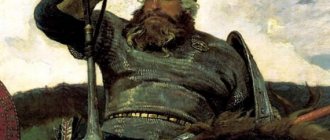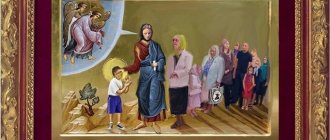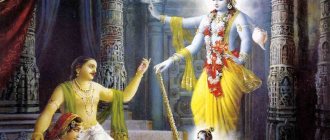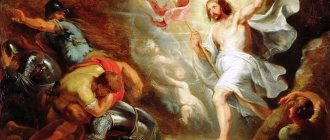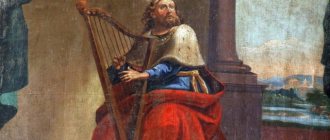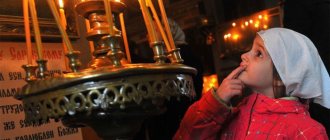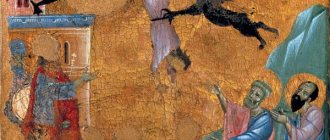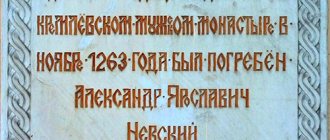In January, on the 1st day of the month, Orthodox Christians honor the memory of an unusual saint - St. Elijah of Murom, Pechersk. As you may have guessed, we are talking about a glorious Russian hero, an epic hero known to us from childhood. Although many of our contemporaries consider Ilya Muromets a fictional character, there is a lot of evidence that he really existed. Who is Ilya Muromets and how he became a saint, you will learn from the article.
Ilya Muromets. Photo: ru.wikipedia.org
Interesting facts about the holy hero
There are many interesting facts associated with the name of the glorious Russian hero:
- The first mention of Ilya Muromets is contained in the diary of the ambassador of the Holy Roman Empire who visited Kyiv (1594). In the ancient Russian chronicles that have survived to this day, there is not a word about Ilya Muromets. We know the name of the hero thanks to the good people's memory of him.
- Ilya Muromets is a hero not only of Russian epics, but also of German epic. He is mentioned there as the mighty knight Ilya the Russian.
- A legend has survived to this day that explains why Ilya Muromets could not walk until he was 33 years old. His pagan grandfather refused to recognize Christ and, to confirm his words, chopped the icon with an ax. For this terrible act, a curse fell on his grandson - he was born crippled.
- It is surprising that a hero born into a peasant family entered the princely squad. It was composed only of the most noble boyars.
- After healing by Ilya Muromets, many glorious feats were accomplished, the most famous of which is the duel with the Nightingale the Robber, who attacked travelers on the road to Kyiv and robbed them. The Knight defeated the whistler, making the path to the capital safe. This act was appreciated by Ilya’s grateful contemporaries and was recognized by them as a real feat.
- The epic hero accepted his death at the age of 45. By modern standards, he died in the prime of his life, and in the old days a person approaching his fiftieth birthday was considered old, having lived his life.
- The descendants of the epic hero live in the village of Karacharovo to this day, carefully preserving information about their glorious ancestor.
Relics of Elijah of Pechersk. Photo: ru.wikipedia.org
The mystery of the death of Ilya Muromets
There can be only one explanation for this fact: the name of the commoner was an eyesore for the noble boyars and the princes of the golden age of Kievan Rus who relied on them. That is why it was erased from the chronicles as an undesirable and even outrageous precedent of the dizzying rise of a simple peasant.
Moreover, he was buried in the aisle of the main temple of Kievan Rus - Sophia of Kyiv - the grand-ducal tomb (where not all princes were buried). The boyars could not even dream of burial in Sofia of Kyiv, since for them it was an unheard-of honor!
Probably for this reason, at a later time, the tomb of the “peasant boyar” was destroyed, while the tomb of his fellow chapel member, the son of the Drevlyan prince Mal, Dobrynya Nikitich, “survived.” This significant “memory” on the part of those in power regarding the unborn defender of the Russian Land was reported in his diaries by the ambassador of the Holy Roman Emperor Rudolf II, Erich Lasota, who was passing through Kiev from May 7 to 9, 1594, on his way to the Cossacks on a diplomatic mission.
By that time, the Kiev Pechersk Lavra had taken care of the remains of the legendary man, where he rests to this day, in the Near Caves, under a modest inscription above the tomb “Ilya of Murom.”
According to the church calendar, the memorial day of Ilya Muromets, the son of Ivanovich, is December 19 according to the old style, or January 1 according to the new style. By the way, it was on January 1, 1993, in the homeland of Ilya Ivanovich, in the village of Karacharovo, that the icon of the Venerable Ilya of Muromets was solemnly installed (with a reliquary inserted into it containing a particle of the relics of the hero, transferred at one time by the Kiev-Pechersk Lavra) in the newly built church of Guria, Samon and Aviva.
And it is thanks to the archival materials of the Kiev Pechersk Lavra that we at least approximately know the dates of the life of the popularly beloved warrior.
In 1638, the Lavra’s printing house published the book “Teraturgima” by the monk of the Kiev-Pechersk Monastery Afanasy Kalnofoysky. The author, describing the lives of the Lavra saints, devotes several lines to Ilya, specifying that the hero lived 450 years before the book was written, that is, in 1188.
The events of those distant years are extremely dramatic. In 1157–1169, Kyiv became the scene of internecine conflicts over the right of the great reign. During this period alone, 8 princes changed on the Kiev throne, in 1169 the capital city was devastated by Andrei Bogolyubsky (by the way, who took away the icon from Sophia of Kiev, now known as the icon of Our Lady of Vladimir), and from 1169 to 1181 Kiev was ruled by 18 princes, some of them even several times. In addition, the Polovtsians intervened in the struggle for grand-ducal power, carrying out devastating raids on the Kyiv lands in 1173 and 1190.
And when examining the body of Ilya Muromets by forensic medicine specialists, it turned out that the epic hero became a victim of one of these raids. According to Sergei Khvedchenya (Around the World magazine, No. 1, 1994), this sad event occurred in 1203 during a devastating raid on Kyiv by the united troops of Rurik and the Polovtsians. The city was then taken by storm, the Kiev Pechersky Monastery and St. Sophia Cathedral were plundered, and most of the capital was burned to the ground. According to the chroniclers, “such devastation had never happened in Kyiv before.” By that year, the hero, in his declining years, had become a monk in the Kiev-Pechersk Monastery, so, probably, Ilya, nicknamed “Muromets”, became a monk there when he was tonsured - his true name was not preserved in church chronicles. And naturally, the former warrior could not stand aside, defending the symbol of Old Russian Orthodoxy and his monastery.
A medical examination of the hero's mummified remains, carried out already in the 20th century, showed that, judging by his wounds, he did not become easy prey for his enemies. Several wounds were found on the body of Ilya Muromets, of which only one was serious - on the arm from a spear, and the fatal one was also a spear, but in the area of the heart. Only both feet are missing. In addition to the deep round wound on the left arm, the same significant damage is visible in the left chest area. It seems that the hero covered his chest with his hand, and with a blow from a spear it was nailed to his heart. The relics are dressed in monastic clothing. Above the tomb there is an image of St. Elijah of Murom.
The first study of the remains of the hero was carried out in 1963. Then, in that Soviet atheistic era, the commission concluded that the mummy belonged to a person of the Mongoloid race, and the wounds were imitated by the monks of the Lavra. In 1988 The interdepartmental commission of the Ministry of Health of the Ukrainian SSR conducted an examination of the relics of St. Elijah of Muromets. To obtain objective data, the most modern techniques and ultra-precise Japanese equipment were used. The research results are amazing.
It is curious, but back in 1701, the wandering priest Ivan Lukyanov, who visited the catacombs of the Kiev Pechersk Lavra. The pilgrim could not see the other wound on his chest because of the gilded veil.
Medical experts dated the remains of the warrior who died with honor in battle to the 12th century, and according to Sergei Khvedchenya, the time period of Ilya Muromets’ life was from 1148 to 1203.
From a modern point of view, the hero was slightly taller than average - 177 cm, but in the 12th century such a man was considered a giant (and even 350 years after the death of Ilya Muromets, in 1584, a passing Lviv merchant Martin Gruneweg was amazed by the “relics of a giant” ancient Russian history).
However, Ilya Muromets’s physique really differed from ordinary people - he was “well-cut and firmly built” - “oblique fathoms in the shoulders,” as they used to say in the old days. The phenomenal strength of the hero was inherited by his distant descendants - the family of Karacharov villagers Gushchins, who, like their great ancestor, in the last century could easily move a load that was beyond the strength of a horse.
Anatomists noted in the lumbar region of Ilya’s body a curvature of the spine to the right and pronounced additional processes on the vertebrae, which made it difficult for the hero to move in his youth due to pinched nerves of the spinal cord. By the way, the epics tell about the same thing, Fr. And only the “passing kaliki” - folk healers - set Ilya’s vertebrae and gave him a healing herbal decoction, blessing him for feats of arms.
The fact of the presence of the revered relics of the famous hero is reflected in the epic texts themselves. The end of the epic “Ilya Muromets and Kalin the Tsar” performed by the storyteller Shchegolenkov is so interesting: “from these Tatars and from the filthy ones, his horse and heroic horse became petrified, and the relics and saints of the old Cossack Ilya Muromets became.” Everyone remembers from childhood that passing Kaliki prophesied to the famous hero that “death in battle is not written for him.” Therefore, in epics and fairy tales the death of a hero is told differently: either he is petrified alone, or with other heroes; then he goes into the coffin alive and remains there forever; Then, together with Dobrynya, he sails away somewhere on the Falcon Ship, and since then there has been no news of him. But as the examination of the relics showed, the Kalik prophecy, unfortunately, did not come true.
Experts determined the age of the epic hero to be 40–45 years plus 10 years due to his specific disease. Using the method of reconstructing the soft parts of the face from the skull of the famous anthropologist M. M. Gerasimov, the leading expert in this field, criminologist and sculptor S. Nikitin, recreated a sculptural portrait of Ilya Muromets.
According to Sergei Khvedchenya: “the portrait was clearly a success for the master. He is the embodiment of calm strength, wisdom, generosity and peace. There is no remorse in his eyes, he fought for a just cause and did not live his life in vain. The strong hands of the hero rest not on a damask sword, but on a monastic staff as a symbol of the last years of his life spent in the monastery.”
Film adaptations
Ilya Muromets stopping by a stone is an image familiar from childhood. It is not surprising that many films and cartoons have been made about the hero, and many paintings have been written.
Boris Andreev was the first to try on the role of a powerful warrior. The film “Ilya Muromets” was released in 1956. The plot is based on classic epics about the hero and scenes from Pushkin’s fairy tales.
Boris Andreev as Ilya Muromets
The Soviet cartoon about a warrior was released in 1975. The second part was released three years later. Animated films tell about significant events in the life of a warrior. The musical setting is compositions from the opera “Ilya Muromets”.
Ilya Muromets in the Soviet cartoon
In 2007, the animation film studio "Melnitsa" released the cartoon "Ilya Muromets and Nightingale the Robber." The image of a taciturn strongman, beloved by kids and their parents (the one who voiced the hero did not have to memorize much text), will later appear in four more cartoons dedicated to Russian heroes. The voice of Muromets was Valery Solovyov and Dmitry Bykovsky-Romashov.
Ilya Muromets in the Russian cartoon
In the film “Real Fairy Tale” (2010), the epic character was transferred to modern reality. Ilya holds the position of guard for Koshchei the Immortal and does not at all look like a true hero.
Alexey Dmitriev as Ilya Muromets in the film “Real Fairy Tale”
In addition to films, the image of a strong and courageous man is reflected in paintings, musical compositions, performances and computer games.
Becoming a priest on your deathbed or serving the church is the goal of life
Scientists argue: Ilya Muromets (Ilya Pechersky) initially connected his life with serving God and protecting Christians in Rus', or became a monk on his deathbed.
According to researchers, Ilya spoke critically of the prince and treated religion with great trepidation. Therefore, Muromets sought to be useful to the church and Christians, and not to the ruler.
But this does not answer the question: when did Muromets become a priest. Therefore, myths appear about Elijah, who survived the battle, and wanted to devote the rest of his life to the exploits of a monk.
Quotes
“I am going to serve for the Christian faith, and for the Russian land, and for the capital city of Kyiv...”
“I am from the city of Murom, Ilya, son Ivanovich. And I came here along the direct road past the city of Chernigov, past the Smorodina River.”
“My father of light had a voracious cow. I also ate a lot. Yes, by the end her belly was cracked.”
“Run, you damned ones, to your places, and create such glory everywhere: Rus' the land does not stand empty.”
“Forgive me, mother, I am not a worker in the field, not a breadwinner. Tsar Kalin prepared a mortal arrow in the heart of Kyiv. It’s not a great honor for me, good fellow, to sit in Karacharovo.”
